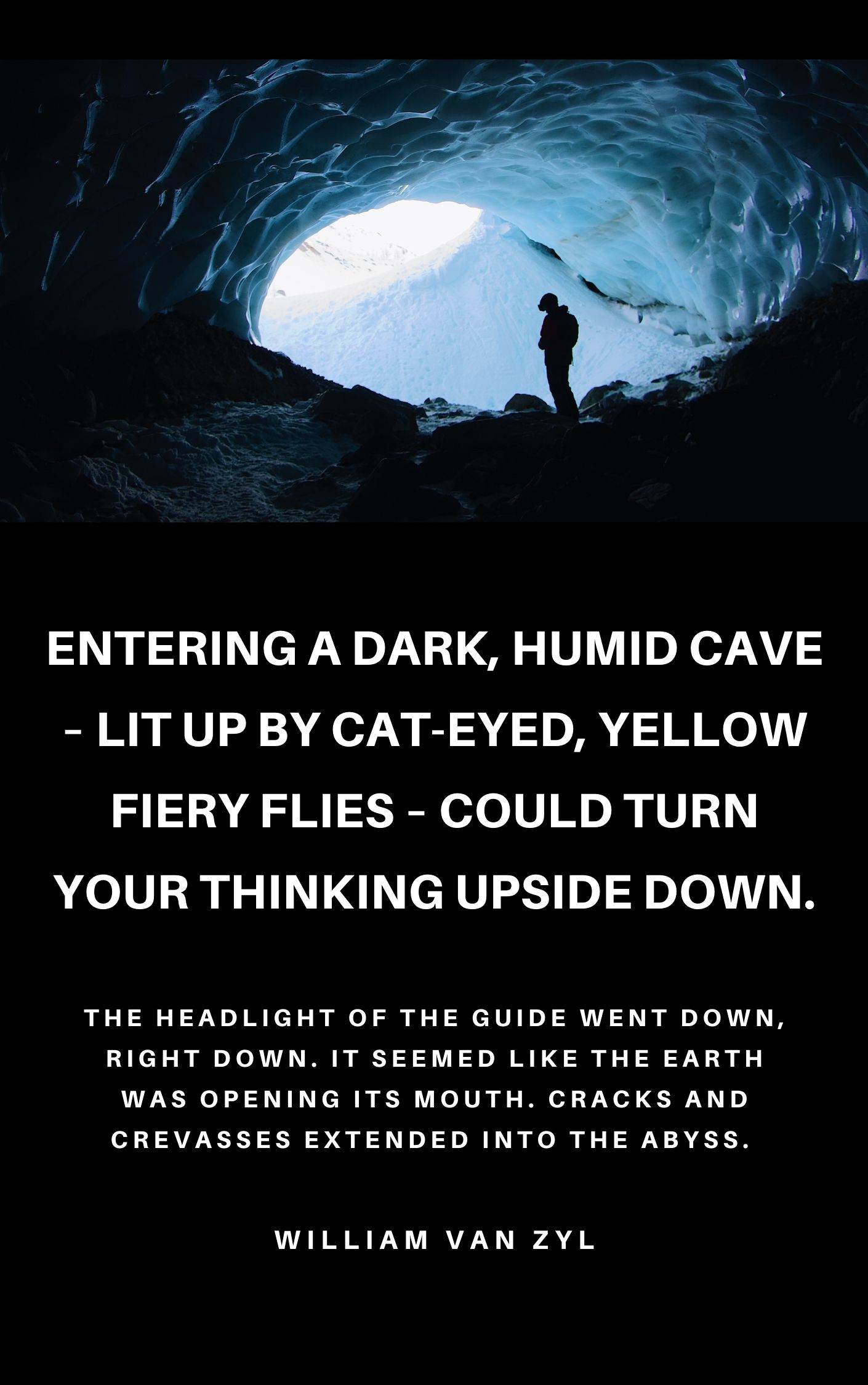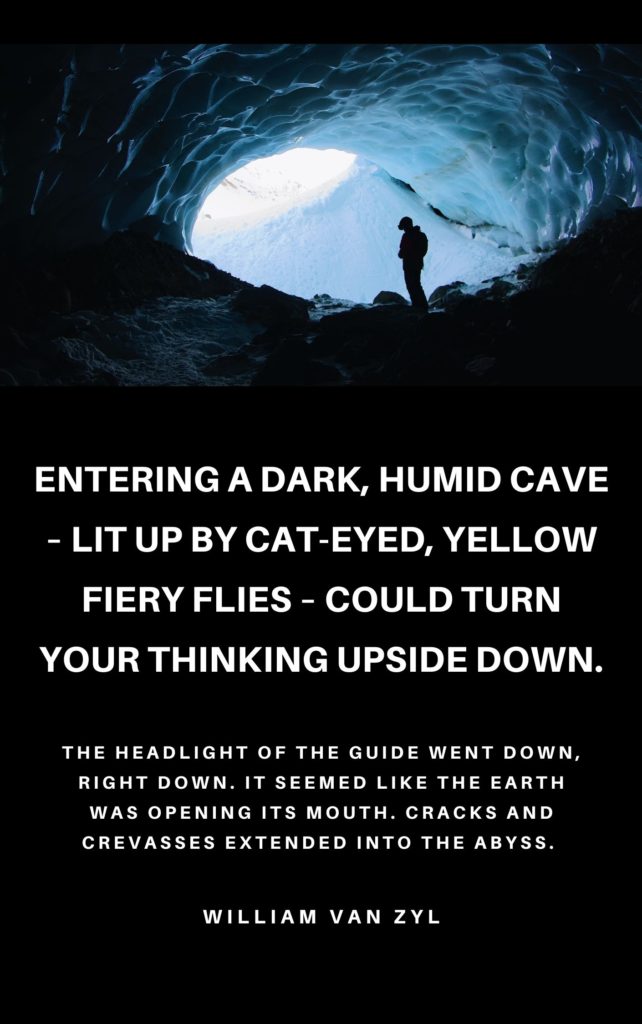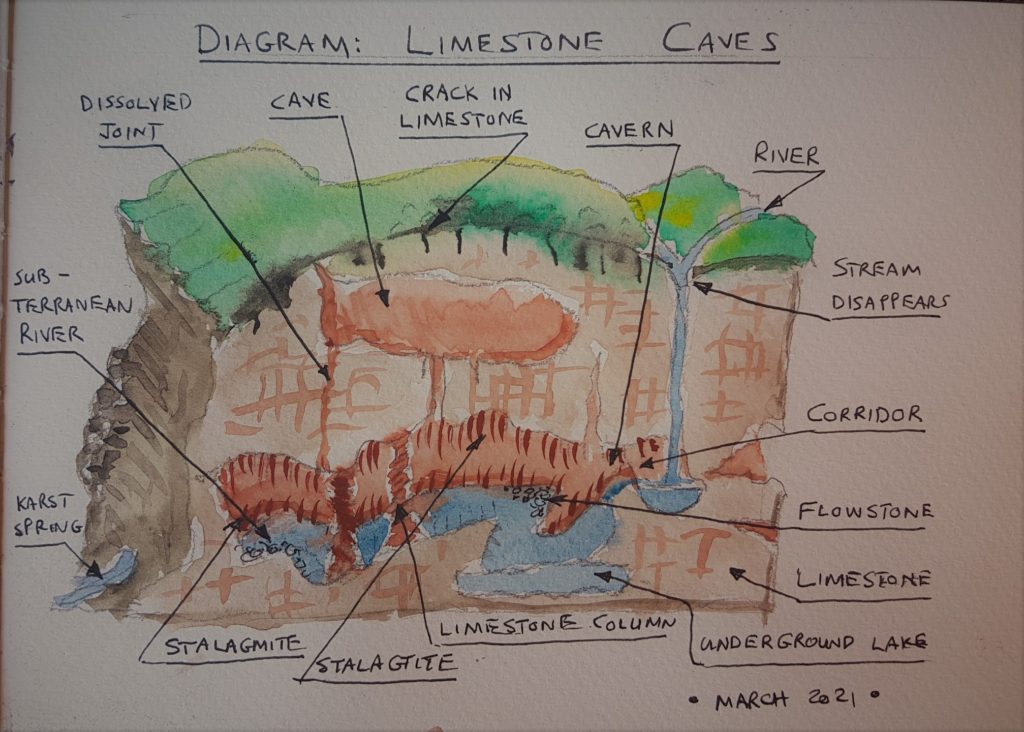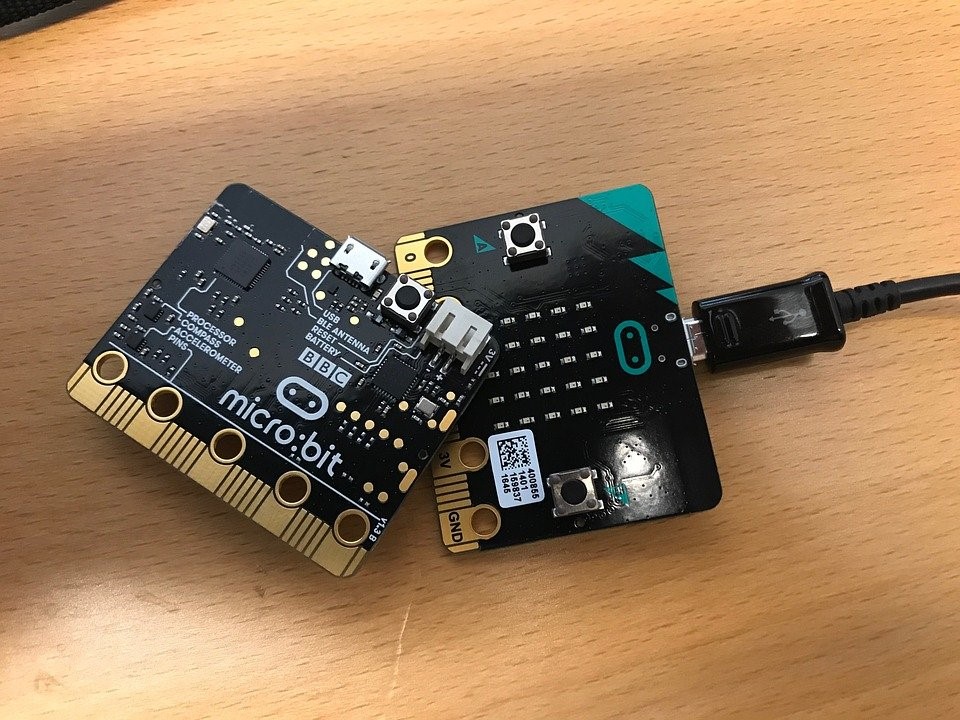
By William Van Zyl (March 2021)


On Friday, 5 March 2021, I stepped into the unknown. It was dark, humid, and very black. Yellow cat-eyes stared at me from the ground. It was evenly spaced and extended way ahead of me. Where could it lead? It took some time for my sensitive eyes to adapt to the lack of light.
The tiny yellow eerie lights led the way – into the unknown.
The handrails were dead-cold and wet. My cold, wet hands slipped away from the cold stainless steel. It must have cost a small fortune to install all these stainless steel handrails, I thought. I know all types of metal. This was definitely stainless steel. Tiny grooves have been added in an attempt to reduce the slippery surface of the rail in the always wet conditions.
The guide stopped and waited till the group gathered around him. His headlight was pointing up. It looked like a halo. I looked up. Pointy stalactites hanged dangerously low from the roof of the cave.
“Don’t touch the limestone. The natural chemicals on your hands will affect it,“ said the guide. I instinctively pulled my hand back. “There is a $ 10,000 fine in place to protect all the precious stalactites and stalagmites,” said the guide with a friendly smile.
The guide’s light, some 15 meters ahead of me, skimmed over some more interesting formations. It looked like wax, white candle wax. There was a unique curtain formation – a beautiful limestone drape.
The headlight of the guide went down, right down. It seemed like the earth was opening its mouth. Cracks and crevasses extended into the abyss. Then I noticed the walkway was suspended several meters above the large rocks. I felt unsafe. I stopped and placed my hands on the handrail; I then knelt down and touched the walkway’s different parts and components. The structure was a combination of different materials. Stainless steel rods – a diameter of about 20 mm – was anchored into the rocks and was connected to the walkway bridge. It looked like spider web chords holding the ‘fairy bridge’ in position. The floor was a strong galvanised metal grid with a recyclable rough layer of plastic on top of it. It was very rough. The footing was very well designed to prevent any slipping while walking on the walkway bridges. The wet conditions in the caves required secure footings. Safety in a cave is paramount. The sides of the bridges and walkways were covered with galvanised steel mesh with a diameter of about 6 mm to 8 mm. The construction was solid and rustproof.
“An amount of 30 million dollars was spent to make these caves accessible to all people. That includes toddlers and babies in strollers and challenged people in wheelchairs,” added the guide. ‘Wow, that explained the choice of materials and the well-thought-through engineering in the caves,’ a random thought crossed my mind. Outstanding design and engineering! Very sustainable. The robust, solid and rustproof walkways are indeed very sustainable. The materials would probably last for hundreds of years with minimum maintenance required. The Waitomo Caves in New Zealand have received particular attention from sustainable engineers and designers.

Wait, there are more sustainable features.
“All the Led-lighting, sensors and light timers in the cave, are they powered by solar panels?”
“Yes, solar panels outside are the main source of power for the lighting and electrical systems in the caves,” answered the guide.
“Are there any other sustainable features in the caves?”
“Led lighting throughout the caves are huge energy savers, as you most probably know. It saves 70% to 80% power compared to incandescent lighting. The CO2 sensors and other sensors – detecting movement – are all powered by solar energy. Very energy efficient indeed. The light-timers are designed and placed at specific points to minimise the use of energy in the caves. It also ensures that the glow worms and the sensitive ecosystems are affected to the minimum.”
“The special tunnel – with two airtight doors on both ends – are very effective, aren’t they?”
“You’re right. The short tunnel ensures that the airflow from the main entrance is not extended into the rest of the cave system,” said the guide.
“Are the biodiversity in the caves stable and balanced?”
“Yes, it is. Scientific data is collected regularly, and comparative studies are made to ensure any changes are flagged. The biodiversity issues faced by the Waitomo Glowworm Cave, the Ruakuri Cave and the Aranui Cave are addressed immediately. The larvae of the genus Arachnocampa, also known as glowworms, are bioluminescent predatory insects that use light to attract prey and are very sensitive creatures,” continued the guide.

Table of Contents
Sustainability: Waitomo Caves
The Waitomo Caves are managed under strict sustainability rules and practices to ensure the caves’ sustainability is maintained for future generations. However, in this article, I am focusing on the digital and electronic features that contribute to these fantastic caves’ renewability.
Computer programming, sensors, and electronic devices can be very effective in the management of caves – specifically when it comes to sustainability and balancing sensitive ecosystems. Our young people have to be made aware of the digital and electronic possibilities of managing limestone caves. Usually, in their introductory talk, the guides will comment on the practices that most of us are aware of: recycling, repurposing, packaging, air condition in the caves, the condition of the glowworms, and more. It is the materials used for construction, the sensors, and the lighting which are t the centre of this article.
Tourists’ and cave tour operators’ breathing – when inside the caves – are monitored. The amount of carbon dioxide present in the caves is constantly measured. Too much carbon dioxide within the caves will attack the natural limestone formations. To prevent decay, digital monitoring devices were installed to manage the biodiversity of the caves. The particular ventilation tunnel – mentioned – is very useful to restore the natural ventilation in the caves. Knowing when the cave supervisor needs to open and close the central doors (vents) to the cave, the sensitive atmosphere inside these caves stays stable. Other monitors are used to monitoring the cave temperature, air quality, rock temperatures, and humidity levels, which help counteract when the cave vent needs to be opened and closed. Additional sensors are in place to manage the stalactites and stalagmites. These sensors are installed where the limestone formations are very close to the walkways. To eliminate the touching of the limestone by visitors, a loud beep is heard when someone places their hand or arm past the handrails. It is a very successful deterrent.
Ventilation:
Sometimes, if the carbon dioxide levels are extremely high – when many tourists are going through the caves – the ventilation doors will shut, allowing no tourists through for some time. It continues until the equilibrium is restored.
Lighting design:
The lighting systems were designed to reduce the possible damage to the caves. It has the ecosystems and biodiversity of the caves in mind. The caves’ guides use the absolute minimal amount of light to prevent lampenflora from growing on the limestone formations. Led lights – in stark contrast to incandescent lights – are installed throughout the caves. Led lights are light-emitting diodes and emit no heat at all, compared to their counterparts, the incandescent lamps, which emits light and heaps of heat. It means that Led’s energy efficiency ranks between 70 % to 80 % less compared to incandescent lighting. The Led-lighting-systems contributes significantly to energy efficiency and protecting the sensitive cave environments at the same time. Energy is harvested from the sun via solar panels to maximise savings at the Waitomo Caves. Light-timers have also been installed; the lights switch off automatically when no one is around.
Definition Lampenflora: “Lampenflora” designates the totality of all autotrophic plants (some bacteria as well as algae, mosses and. ferns) occurring in proximity to permanently installed light sources in caves and mining galleries. Credit: https://samawaitomo.weebly.com/how-the-waitomo-caves-are-sustained.html
The choice of construction materials: Suspended steel walkways, concrete platforms, and concrete formwork.
The barriers of the suspended steel walkways are constructed with long-lasting and exceptionally durable materials. The cave conditions do not cause any safety issues to visitors and guides, unlike the old days, when the stairways and paths were made of wood. The wood structures would be rotting away in the wet, damp climates. With the new and improved barriers, people are not at risk of slipping on slippery surfaces and risking damage to the natural cave structures. There are also many handrails attached to the edges of the paths for both people’s safety. It minimises the possibility of people touching the formations inside the caves. Attached to some of the handrails are sensors – mentioned earlier – which alerts anyone leaning over or putting their body outside of the boundaries, potentially damaging the caves. These alarms continue to send out a loud beep until the person moves back inside of the railings. This is a very effective and sustainable way that stops people from interacting with the caves in a way that could potentially damage them.
The cave tour guides constantly monitor visitors’ behaviour to ensure that people travelling throughout the caves are always aware of the caves and glowworms’ sensitivity. Any litter they may create whilst in the caves are taken care of. This ensures that future tourists can also enjoy the pristine beauty of the caves.
There is also a qualified full-time environmental officer employed. The officer’s responsibility is to maintain the glow worm population by monitoring the glow worms inside the cave every 30 minutes from photographic computer technology. This critical task rests on the officer’s shoulders. If glowworm numbers drop rapidly, studies are carried out to ensure the glow worms are kept in the optimal natural environment they should be in. Changing and adjusting elements, such as the humidity levels inside the cave, is an example. This practice is a very effective solution to maintain the glow worm population in the caves. The continued monitoring supports the ideal conditions in the caves for the ecosystems. The disruption of the natural environment is kept to a minimum.
FUN FACT: There are approximately 800 to1100 show caves throughout the entire world, with an estimate of only 10% of the world’s caves believed to have been found. Waitomo Caves is one of the most sustainable caves globally that continues to be sustainable whilst allowing hundreds of thousands of people to enjoy the caves’ natural beauty each year. The role of digital technology and electronic devices are paramount in the successful management of the caves.
Reference: https://samawaitomo.weebly.com/how-the-waitomo-caves-are-sustained.html
The role of microprocessors and pocket computers: Managing sustainability and sensitive environments:
Many years ago, the UK had a plan and a strategy to expose their young people to computer programming and coding. An impact study shows remarkable progress in training and educating the young generation from the early 1980s till recently (April 2020):
The Early 1980s: The BBC’s Computer Literacy Project leads to the introduction of the BBC Micro, a microcomputer built by Acorn Computers. BBC Micro runs a new programming language, BBC Basic, which even young children can understand and start a computing revolution. About 80% of British schools have a BBC Micro, which is famous for home use. Model A and the more expensive Model B go on to sell more than 1.5 million units.
Almost 3 decades later (comparison) –
Then assessing the impact in April 2020: The winners of the do your:bit challenge are announced. Over 1,000 entries were submitted, demonstrating children’s work in response to the UN Global Goals for Sustainable Development, using the Micro’s technology:bit in the expression of their ideas. The annual competition asks young people aged 8-14 to use technology to solve a problem affecting their community or a community elsewhere in the world.
References:
https://microbit.org/impact/case-studies/milestones-for-the-bbc-microbit/
and
linkedin.com/company/micro-bit-educational-foundation
The mantra of the UK :
We want to inspire a new generation to get creative with coding, programming and digital technology.
What is a micro:bit? The BBC micro:bit is a pocket-sized codeable computer with motion detection, a built-in compass and Bluetooth technology, which was given free to every child in year 7 or equivalent across the UK in 2016.

A collaboration between 29 partners, the BBC micro:bit is the BBC’s most ambitious education initiative in 30 years, with an ambition to inspire digital creativity and develop a new generation of tech pioneers.
“We happily give children paint brushes when they’re young, with no experience – it should be exactly the same with technology,” Sinead Rocks, Head of BBC Learning, said.
Reference: https://www.bbc.co.uk/programmes/articles/
The current and new generation of Technologists, Computer Programmers and Digital Designers will impact the sustainability issues we are facing now and in the future. Technology can be harnessed to bring about change on a global scale for the good of the planet and its inhabitants. Here is a list of the essential things we should all be working towards as global citizens.
The Sustainable Development Goals (SDGs) or Global Goals are a collection of 17 interlinked global goals designed to be a “blueprint to achieve a better and more sustainable future for all.” (United Nations – Agenda 2030).
The 17 SDGs are:
(1) No Poverty,
(2) Zero Hunger,
(3) Good Health and Well-being,
(4) Quality Education,
(5) Gender Equality,
(6) Clean Water and Sanitation,
(7) Affordable and Clean Energy,
(8) Decent Work and Economic Growth,
(9) Industry, Innovation and Infrastructure,
(10) Reducing Inequality,
(11) Sustainable Cities and Communities,
(12) Responsible Consumption and Production,
(13) Climate Action,
(14) Life Below Water,
(15) Life On Land,
(16) Peace, Justice, and Strong Institutions,
(17) Partnerships for the Goals.
The Micro:bit (the equivalent is the Raspberry Pi and the Arduino Uno) is a unique microprocessor that could be used to teach students computer programming and introduce them to the world of electronics. These skills – applied to issues and problems we are facing today – could make a huge difference in designing a sustainable future for us all.
Do you have an idea of how a Micro:bit could make a difference in a cave system? Parents, students, and teachers, why don’t you order a micro:bit and explore the world of computer programming and sustainable practice? Are you keen?
More about the Micro:bit
The BBC micro:bit is a revolutionary embedded system for helping students of all age groups learn to program and build a wide variety of projects. It is a collaborative project of leading organisations such as the BBC, ARM, Microsoft, Lancaster University, British Council, Institute of Engineering & Technology, Farnell Element14, NXP, Samsung, and Amazon. It consists of an ARM microprocessor, Bluetooth, Radio, 25 LED Matrix, Accelerometer, Magnetometer, Light Sensor, Temperature Sensor, Push Buttons, USB interface, PWM Outputs, Banana/Crocodile Connectors, Edge Connectors, Analog Inputs, up to 17 GPIOs and the very useful I2C, SPI capability that lets you talk to an endless array of devices and sensors. It can be programmed in Blocks, JavaScript, MicroPython or C/C++ (mbed platform) [6] [7]. The latest iOS language Swift can also be used to interact with the Micro:bit.
Listen to the podcast of this article:
https://www.podbean.com/ew/pb-vbeeq-feb056
Copyright © 2021 by William Van Zyl
Entering a Dark, Humid Cave – lit up by cat-eyed, yellow fiery flies – could turn your thinking upside down.
All rights reserved. This article/eBook or any portion
thereof may not be reproduced or used in any manner
whatsoever without the express written permission of the
publisher except for the use of brief quotations in a book review.
Published by Five House Publishing (New Zealand)
First Publishing, 2021
About the Author:
The author had an exciting and unique childhood. Not as you would expect – not travelling abroad – but venturing through the fields, bushes, tools sheds, and mysterious underground tunnels around his neighbourhood. His happy place was – and still is – tinkering with ideas, science, and new possibilities. While cycling, he will often get new ideas; he brings the unexpected, the unique, and creative flurry on a page or a sketch. To this day, he dreams of vicious wars and sophisticated weaponry in an innocent child’s scout cave. He loves diagrams, timelines, cross-sections, sketches, and details of sinister and hidden concepts and ideas, always looking for a new mystery to decode and encode. He investigates and explores extravagant thoughts that he includes in children’s books and stories; he loves to portray philosophers’ perspectives, articles, intriguing stories, and poetry. Academic and research work are his forte. He always offers a practical but straightforward explanation within an engaging context. Not your ordinary thinker! A lifelong scholar and teacher.
More articles, eBooks, lessons and resources available to teachers and students at Five House Publishing.

Download PDF: https://fivehousepublishing.com/
More about the author: http://williamvanzyl.com/